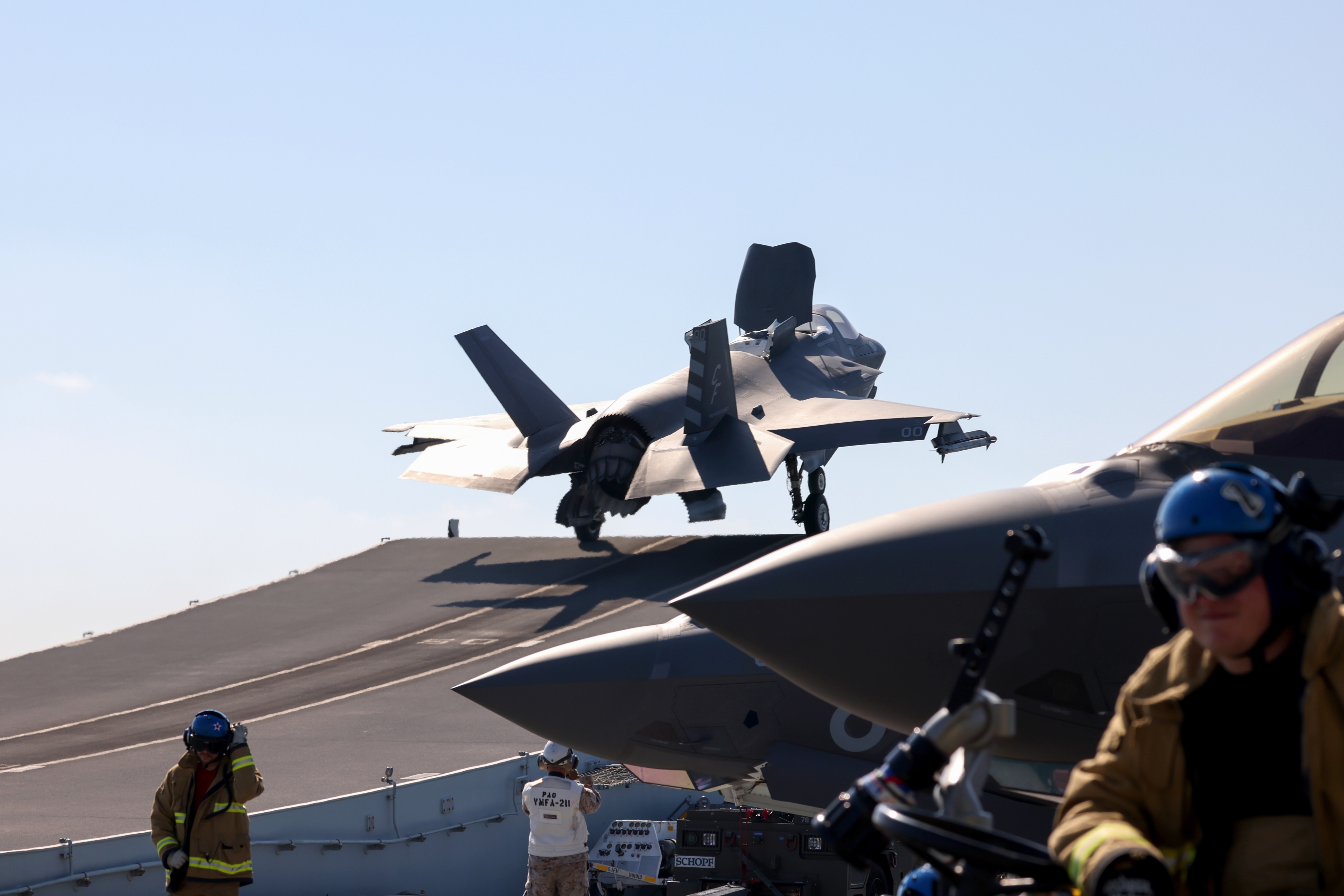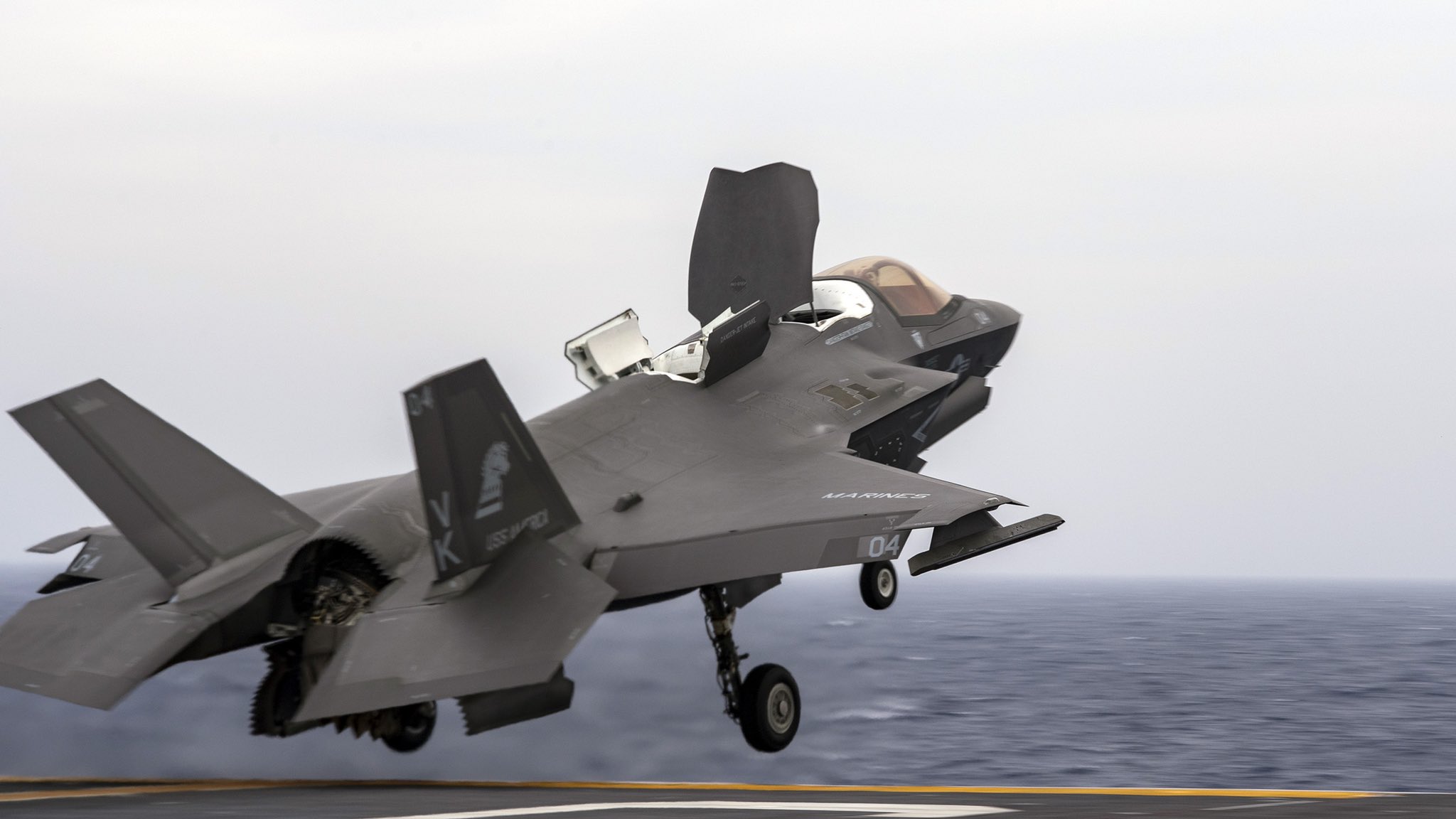The UK, one of the investing partners in the Lockheed Martin F-35 Joint Strike Fighter Program, seems to be growing skeptical of the fifth-generation jet.
In a meeting of Britain’s Parliamentary defense select committee, UK Defence Secretary Ben Wallace showed signs of concerns on the high maintenance costs and the delay in integrating the MBDA Meteor missile with the jet, as reported by Defense News.
“[It’s] important that we continue the planned integration of Meteor on the F-35…it’s in all your interests that if you want me to carry on buying F-35 that we keep a lid on those costs and that we are treated fairly integrating a European made missile [on the jet],” Wallace said.

The Meteor missile is a next-generation Beyond Visual Range Air-to-Air Missile (BVRAAM), manufactured by European company MBDA.
The UK currently operates the Eurofighter Typhoon, a European twin-engine, multirole fighter jet, which completed its Meteor integration in 2018.
- At €7.8B, Why Indian Rafale Jets Are ‘Double The Cost’ Than Egyptian Rafales?
- Why Did Netizens ‘Mock’ Nigeria For Importing JF-17 Fighter Jets From Pakistan?
Meteor Missiles
Built for air-to-air combat, the Meteor provides an all-weather capability and its advanced radar can identify and destroy targets including unmanned aerial vehicles (UAVs), fighter jets, and cruise missiles.
The network of advanced communication systems allows the operation of the missile using third-party data, as per the MBDA website.
The missile is currently in use by the UK, Germany, Italy, France, Spain, and Sweden. It has been successfully integrated with Eurofighter Typhoon, Rafale and Gripen fighter jets.
The Rafale weapons package exported to countries such as India, Qatar and Egypt includes MBDA missiles Meteor and Scalp (a cruise missile).
A major milestone for the #Meteor #missile as the Rafale F3-R is now to be used in operational service. Meteor gives the Rafale air superiority for beyond visual range engagements in all weathers, as required for handling a wide variety of targets.
➡️https://t.co/cI9gI9WHst— MBDA (@byMBDA) March 19, 2021
After committing to purchase 138 F-35s following its Strategic Defence and Security Review 2015, Britain gave the official green signal for the start of integration work on the Meteor air-to-air missile with the Lockheed Martin fighter jets.
The British defense secretary had said that the Ministry of Defence was investing close to £41 million into the Meteor’s integration and the missiles would be integrated with the F-35B in 2024.
In March 2019, the MBDA came out with an official statement on beginning the integration process, expected to continue till 2025.
UK’s F-35 Fleet
Out of the initial commitment of 138 jets, Britain has ordered 48 F-35B stealth jets for the Royal Navy and Air Force, out of which 21 have been received by the UK and the rest are set to be delivered by 2025.
In a document released in March, Britain stated plans to “grow the [F-35] Force, increasing the fleet size beyond the 48 aircraft but did not mention by how many”.
Defense experts cite the urgency of the UK to arm the HMS Queen Elizabeth-class aircraft carriers, for which more than 48 F-35s will be required.
Want to watch a piece of naval history?
This is the first landing by an F-35 Lightning on the deck of @HMSPWLS off the south coast of England, as the UK forges ahead with a two-strike-carrier Navy.
Find out more: https://t.co/BSqdhfcuPY pic.twitter.com/8evZDv8Mug
— Royal Navy (@RoyalNavy) June 9, 2021
However, in wake of a future homegrown fighter program called Tempest, Britain is sending mixed signals over expanding its F-35 fleet.
Tempest is a joint program between Britain, Italy and Sweden that aims to “develop a family of aerial systems, including a crewed fighter jet that will replace the Royal Air Force’s (RAF) Eurofighter Typhoons from 2035 onwards”.
“Things change in the course of these very long-term programs. Different capabilities come along that render things that you have yet to buy possibly obsolete, or perhaps you need fewer of them, or the threats change,” Sir Stephen Lovegrove, Permanent Secretary of Ministry of Defence (MOD), was quoted as saying by Airforce Technology.
The F-35 Program
The Pentagon’s F-35 program has been marred with controversies ever since its inception. Conceived in the 1990s, the F-35 Joint Strike Fighter Program was to replace the existing American military aircraft with a next-generation state-of-the-art stealth fighter jet.
Lockheed Martin won the bid over Boeing to construct the first batch of F-35s along with its variants that include F-35A which is the simplest model; F-35B which is capable of vertical-landing, and F-35C that can land on an aircraft carrier.
In June 2014, the jet burst into flames just a month before its international debut in Britain. This was just the beginning of the many technical glitches that emerged later including deficient lightning-protection system, shortage of replacement parts, problems with helmet imagery display, etc.

Valerie Insinna, the air warfare reporter of Defense News, highlighted 13 such technical problems marked as ‘Category 1’ deficiencies that cover major flaws impacting the safety or mission effectiveness of the F-35 jet.
Former US President Donald Trump had expressed his dissatisfaction with the program as he tweeted, “The F-35 program and cost is out of control. Billions of dollars can and will be saved on military (and other) purchases after January 20th”.
The U.S. Air Force admitted that the F-35 stealth fighter has failed https://t.co/fDhBTf4Cyd pic.twitter.com/lu8ggzlqjl
— Forbes (@Forbes) February 23, 2021
Despite some problem areas, the F-35 remains the most ambitious international program with eight other countries investing in the development of the next-generation fighter plane.
In 2018, the US Marine Corps became the first military unit to use the F-35 in combat during the airstrikes in Afghanistan.
Apart from the eight international program partners, six other countries including Israel, Japan, South Korea, Poland, Belgium, and Singapore are categorized as “foreign military customers”.
The cost of the jets has since then been decreasing as the sales grow, one jet costing $79.17 million in 2021, down from $241.2 million per plane in its first batch back in 2006.
In 2019, the aircraft made headlines after the US abandoned Turkey off its F-35 program for acquiring the Russian S-400 missiles.
Read More
- WATCH: Russian Su-30 Fighter Forces F-35 Stealth Jets To Retreat In Their ‘First-Ever Encounter’
- Despite World’s Biggest Navy, Why China Will Struggle To Match Indian Submarines In The Indo-Pacific?




